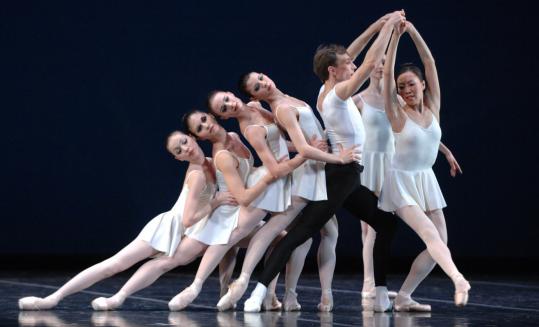Music at the Ballet? Really?
Ballet and Music
Overheard before a performance of American Ballet Theater at the Metropolitan Opera House: Old lady to usher: “Where can I get one of those infra-red listening devices?” Usher (incredulously): “For the ballet?” Old lady (indignantly): “There’s an orchestra, isn’t there?” With another usher’s help, she got her device and departed contentedly, but the incident clearly illustrated the disrespect with which a pit-band is customarily treated. Surely it is the management’s fault that the program lists the orchestra personnel in print so small as to be almost unreadable, and that, though section leaders often play substantial solos, their names are not included in the credits. Audiences are discourteous, talking during musical preludes and interludes and starting to applaud the dancers long before the music stops. But it is the dance critics who show their disdain for the orchestra most blatantly. They usually don’t mention the musicians or the conductors at all, and when they do, it is only to criticize, never to praise them. Obviously, the only people who actually listen to the music are music lovers and fellow musicians, especially those acquainted with the challenges facing a ballet orchestra: the technical difficulties of the scores; the constant alertness required to adjust the music’s demands to the dancers’; and the physical and mental strain of playing eight performances a week.
These reflections were inspired by several visits to American Ballet Theatre’s latest New York season. The repertoire featured some of the most formidable orchestral scores, such as Prokofiev’s “Romeo and Juliet” with its stratospheric string writing; Mendelssohn’s “Midsummer Night’s Dream” with its elfin fleetness and delicacy, and Tchaikovsky’s “Sleeping Beauty” and “Swan Lake” with their almost symphonic orchestrations. All include great solos for the principals; those for violin in “Swan Lake” are essentially concerto in length and virtuosity, but even concertmaster Ronald Oakland remained nameless in the program.
The programs also offered very skimpy information about the music itself. For example, the new ballet “Lady of the Camellias” was only described as set to “music by Chopin.” The program did not identify, or even list, the individual pieces, which included several Preludes and Waltzes in their entirety, and a lot of longer and shorter excerpts of different works for solo piano and piano with orchestra, such as the two Piano Concertos, the B minor Sonata, a Ballade, and two Polonaises. This omission left many members of the audience shaking their heads in puzzled frustration.
Performing this musical quilt required two pianists, so the Company invited Koji Attwood and Soheil Nasseri, both excellent players, to share the program. Probably because they were guest artists, they were given full credit in the program, though who played what was not indicated. But perhaps pianists are considered superior to humble pit-band players: the Company’s own fine pianist, Barbara Bilach, was prominently listed when she performed the solo part in Tchaikovsky’s Third Piano Concerto for “Allegro brilliante.”
Those who undervalue the musical dimension of ballet should remember that the music, whether arranged or expressly written for dancing, can stand on its own, while there would be no dancing without the music or musicians to play it.

